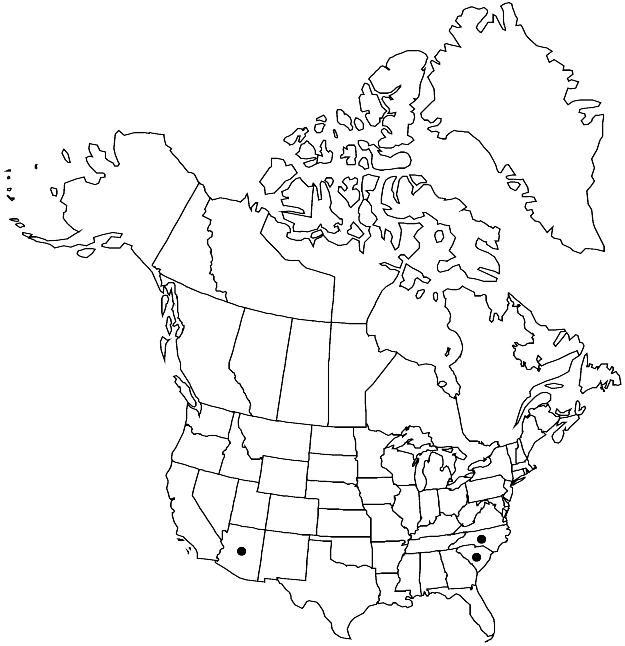Donrichardsia pringlei
in A. E. Newton and R. S. Tangney, Pleurocarpous Mosses, 138. 2006.
Stems 3–10 cm, branches 4–12 mm. Stem leaves 0.7–1.4 × 0.5–0.8 mm; costa to 85–95% leaf length, less than 1/7 leaf width, terminal spine absent or indistinct; alar cells 12–20 × 10–15 µm; laminal cells 1-stratose, (25–)40–60(–80) × 5–7 µm; basal cells 10 µm wide. Branch leaves 0.7–1.1 × 0.4–0.7 mm.
Habitat: Rock in streams and creeks
Elevation: moderate to high elevations (300-2000 m)
Distribution

Ariz., N.C., S.C., Mexico, Central America.
Discussion
Donrichardsia pringlei is superficially similar to Oxyrrhynchium hians and Rhynchostegium, particularly R. aquaticum, which is autoicous. If sporophytes are present, D. pringlei is immediately excluded by the smooth seta of Rhynchostegium, as all known Donrichardsia have a rough seta. When sterile, R. aquaticum is not difficult to distinguish from D. pringlei as its costa usually reaches 0.7–0.9 of the leaf length, whereas the costa of D. pringlei is subpercurrent or 0.8–1 times the leaf length. Oxyrrhynchium hians is mainly a terrestrial plant, also having a shorter costa, but its costa ends in a prominent spine, at least in the branch leaves.
Selected References
None.